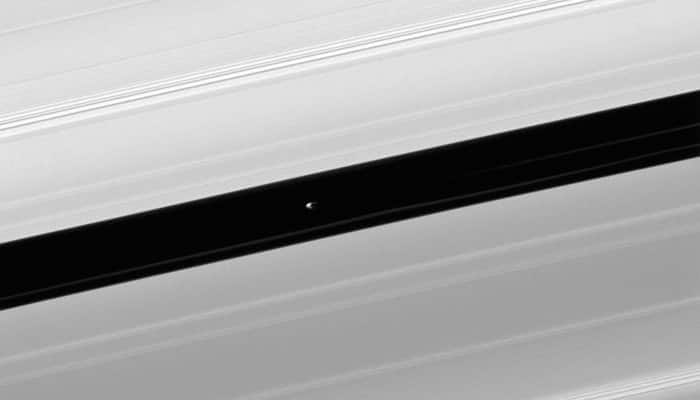New Delhi: In a latest, NASA has released a breathtaking view of Pan showing the second-innermost Saturn's moon orbiting in the Encke Gap.
The image was obtained in visible light with the Cassini spacecraft narrow-angle camera on April 3, 2016, at a distance of approximately 232,000 miles (373,000 kilometers) from Saturn.
According to NASA, Pan (17 miles or 28 kilometers across), seen in image center, maintains the Encke Gap in which it orbits, but it also helps create and shape the narrow ringlets that appear in the Encke gap. Two faint ringlets are visible in this image, below and to the right of Pan.
The Encke Gap is a 325-kilometre-wide gap within the A Ring, centered at a distance of 133,590 kilometres from Saturn's center, as per Wikipedia. It is caused by the presence of the small moon Pan, which orbits within it.
Pan and moons like it have profound effects on Saturn's rings, ranging from clearing gaps to creating new ringlets, to raising vertical waves that rise above and below the ring plane. All of these effects, produced by gravity, are seen in this image.
Many moons, including Pan, create waves at distant points in Saturn's rings where ring particles and the moons have orbital resonances. Many such waves are visible in the image as narrow groupings of brighter and darker bands.
NASA says studying these waves can provide information on local ring conditions.
















